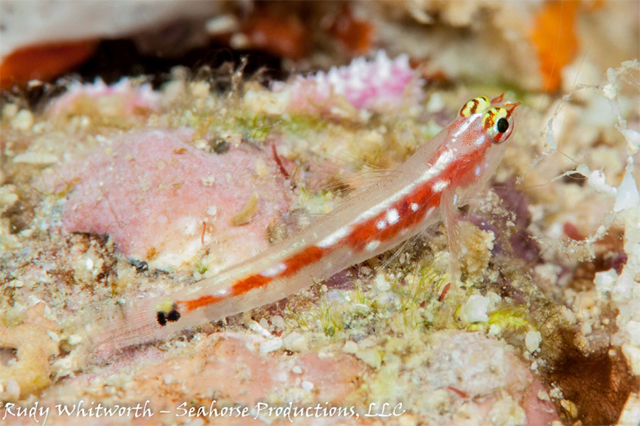| Gobiidae (Gobies), subfamily: Gobiinae |
| 1.09 cm SL (male/unsexed) |
|
reef-associated; marine; depth range 1 - 35 m |
| Western Pacific: New Guinea and the Solomon Is.; possibly in Fiji, Indonesia (Banda Sea), and Australia (Great Barrier Reef). |
|
Dorsal spines (total): 7-7; Dorsal soft rays (total): 8-8; Anal spines: 1-1; Anal soft rays: 7-7. This species is distinguished by the following: body depth ca. 27-31% SL; pectoral-fin rays usually 14; cephalic sensory-canal pore pattern lacking only the IT pore, AITO small and opening dorsally; pectoral-fin rays unbranched; dorsal/anal-fin formula 8/7; fifth pelvic-fin ray 8-15% of 4th ray. Colouration: with a large and dark oval spot on area of preural centrum connected to a short, vertically elongate spot over end of hypural plate; caudal fin of freshly dead specimens with no prominent vertical bars; naris long and reddish brown; side of body with prominent red lateral streak bordered dorsally by 3-5 elongate white dashes; eye with two distinct horizontal stripes, one white crossing through lower margin of pupil, the other yellow crossing upper margin of pupil (Ref. 126557). |
| This species apparently prefers outer reef slopes exposed to clear oceanic water and is frequently observed resting individually on coralline algae outcrops or live plate corals (Ref. 126577). |
|
Not Evaluated (N.E.) Ref. (130435)
|
| harmless |
Source and more info: www.fishbase.org. For personal, classroom, and other internal use only. Not for publication.

